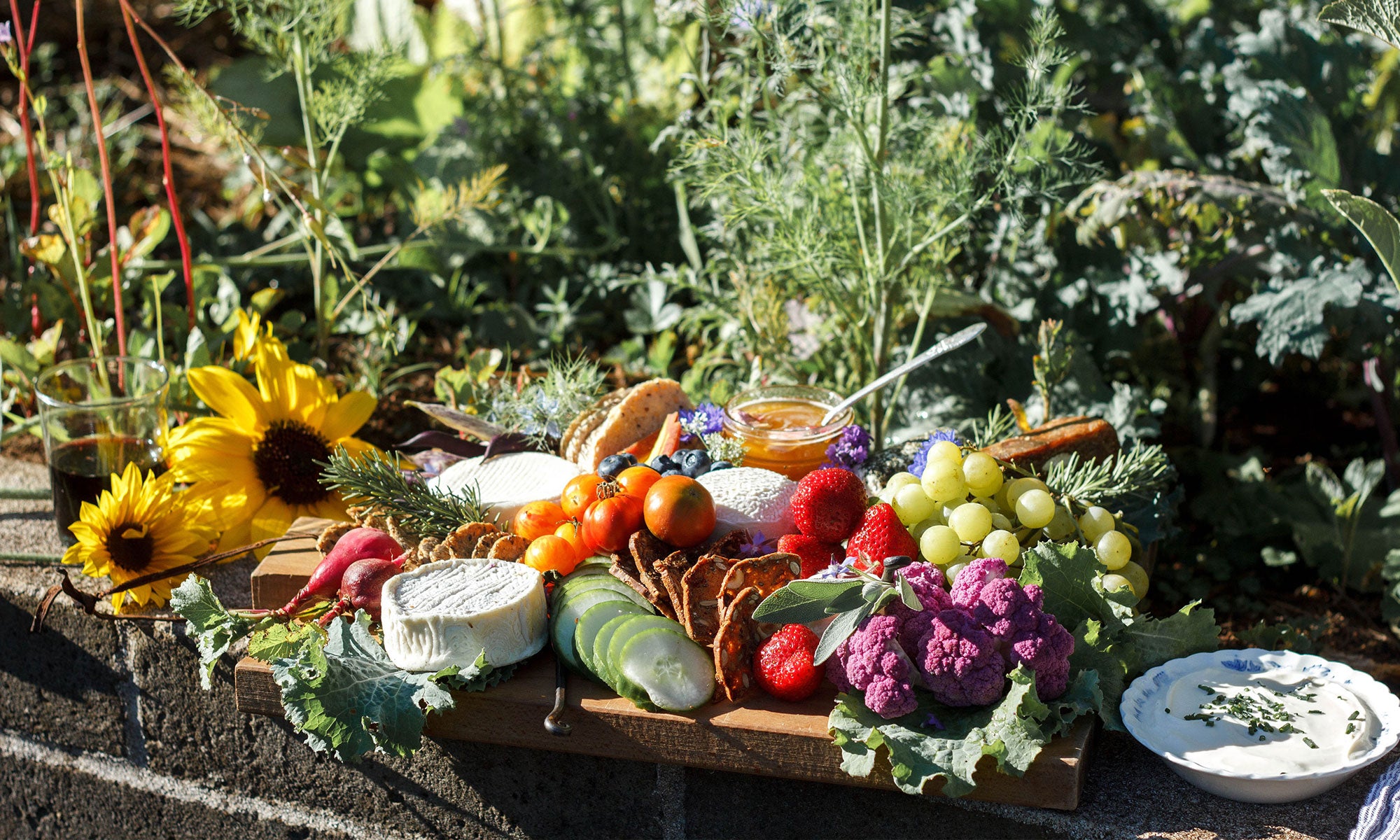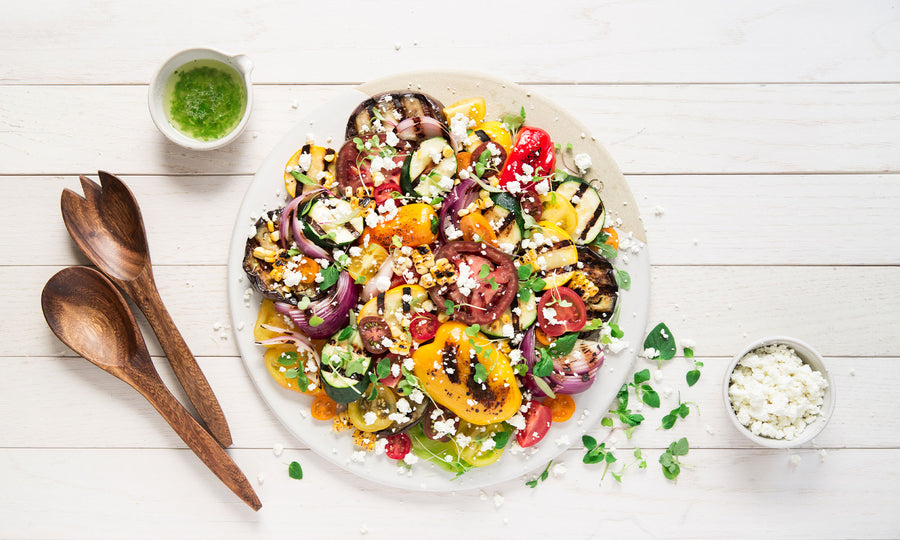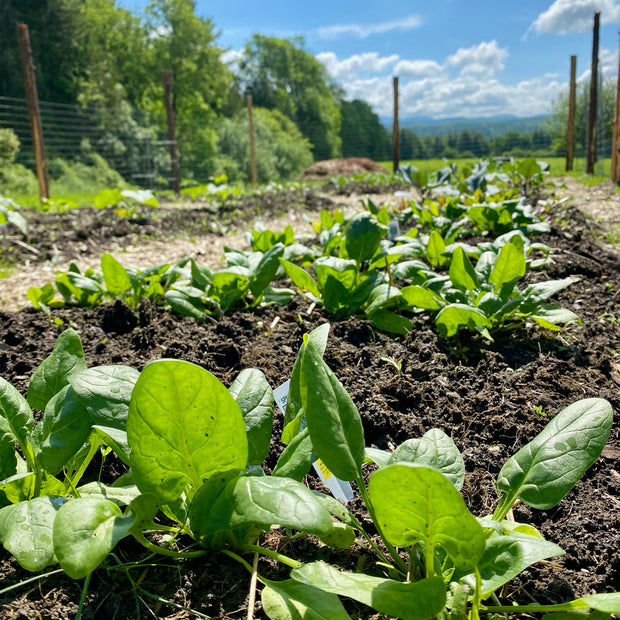
This is the time of year when roadside stands overflowing with fresh-picked fruits and vegetables start popping up all over Vermont. Some are sturdily built structures with colorful awnings and attractive hand-lettered signs advertising their wares; others are wheelbarrows or plastic coolers left at the end of a driveway with a simple message: "SELF-SERVE FARM STAND. CASH ONLY. "
But regardless of how fancy (or not) they may be, these farm stands have one thing in common: They sell delicious locally grown produce, and they're fighting climate change. And if you have a garden — or a sunny window where you can grow a tomato or pepper in a pot — you're helping fight climate change too.
Fighting Climate Change Through Victory Gardens
This isn't the first time gardeners have suited up for battle. During World War II, millions of Americans turned to their own backyards to help counter wartime food shortages. Many of them first-time growers, these victory gardeners contributed nearly 40% of the nation's food in 1943, and proved that even tiny garden plots could make a serious impact when they were planted en masse.
In 2018, Green America's Climate Victory Gardens campaign kicked off a new type of victory garden — one where climate change is the enemy, and the soldiers are seeds. And, knowing that every single homegrown garden — no matter how small — could help, Green America invited everyone to join the party and grow a climate victory garden.
How Can Gardening Help the Environment?
Growing your own produce helps the environment in the following ways:
-
It reduces the fossil fuels used to ship food from one place to another
-
It reduces the greenhouse gases you produce by driving to the grocery store
-
It lets you control the use of pesticides and synthetic chemicals
-
Plants absorb planet-warming carbon from the atmosphere and store it in the soil via photosynthesis. This process — known as carbon sequestration — enriches the soil while decreasing greenhouse gas emissions. The entire process of improving the soil through working it is known broadly as regenerative agriculture.
There are currently close to 9,000 gardens registered on Green America's Climate Victory Garden registry. Together, those gardens are drawing down 4,469 tons of carbon per year and eliminating emissions from an estimated 40,660,877 miles of driving.
The idea here is pretty simple; the more people who garden, the more carbon we capture, and the more emissions we avoid. But it's also an opportunity to grow your own delicious food, get some exercise, teach your kids about seeds and composting, to eat real food, and potentially even to tackle food insecurity on a local level. All of those real and tangible benefits are compelling — and starting a victory garden is good for the environment. What's not to like? Here's how to get started.
How to Start a Climate Victory Garden
Even if you're already a gardener, you might want to tweak your practices a bit to capture as much carbon as possible. Here's what Green America recommends:
-
Grow edible plants that can help you feed your family.
-
Keep soils covered to water less, curb erosion, maintain topsoil, and protect soil microbes. Apply mulch, plant cover crops, and strategically allow weeds to grow.
-
Compost for healthier soil, to reduce food waste, and to grow healthier foods.
-
Encourage biodiversity by planting many different types of plants to create a balanced ecosystem.
-
Plant perennials to reduce disturbing the soil and to help provide habitat and control weeds.
-
Ditch the chemicals, which kill beneficial organisms in the soil. Plus, growing chemical-free produce is safer and decreases pollution.
-
Integrate crops and animals by raising chickens, goats, or pigs, which help keep insects and weeds and bay and provide natural fertilization. (Plus, you might even get some eggs or milk from the deal!)
-
Use people power, not machines to reduce your dependency on fuel, decrease emissions, and cut costs.
-
Rotate plants and crops each year to help soil nutrients stay balanced and to stop pest infestations.
-
Get to know your garden to identify planting zones and learn how you can manage and grow it most efficiently. Try testing soil for nutrients and toxins, get rid of pests and diseased plants immediately, and make notes on what's working and what's not.
Don't have a spare acre to commit to a garden? That's OK. Even if all you're working with is one tomato plant or a basil plant on a sunny windowsill or fire escape, you're still helping pull carbon from the air and reducing greenhouse gas emissions from the food system. And remember how much food the victory gardens during WWII produced? The first-time gardeners with teeny-tiny garden plots still had a role to play.
Vermont Creamery + Gardens
It's probably no surprise that many of us at Vermont Creamery also have gardens — or even full-scale farms — at our homes. (That's par for the course when you're in the business of delicious dairy products!) We rely on our network of farmers to produce the milk for our cheese, butter, and other products, so by extension, we rely on farmers to take the best possible care of their animals and their land. And for that reason — and many others — we're totally on board with doing everything we possibly can to reduce carbon emissions.
So grab a shovel (or a pot with some soil) and join us. Put your garden on the map, and a homegrown vegetable on your plate. We can almost guarantee it'll be the tastiest one you eat all summer.




